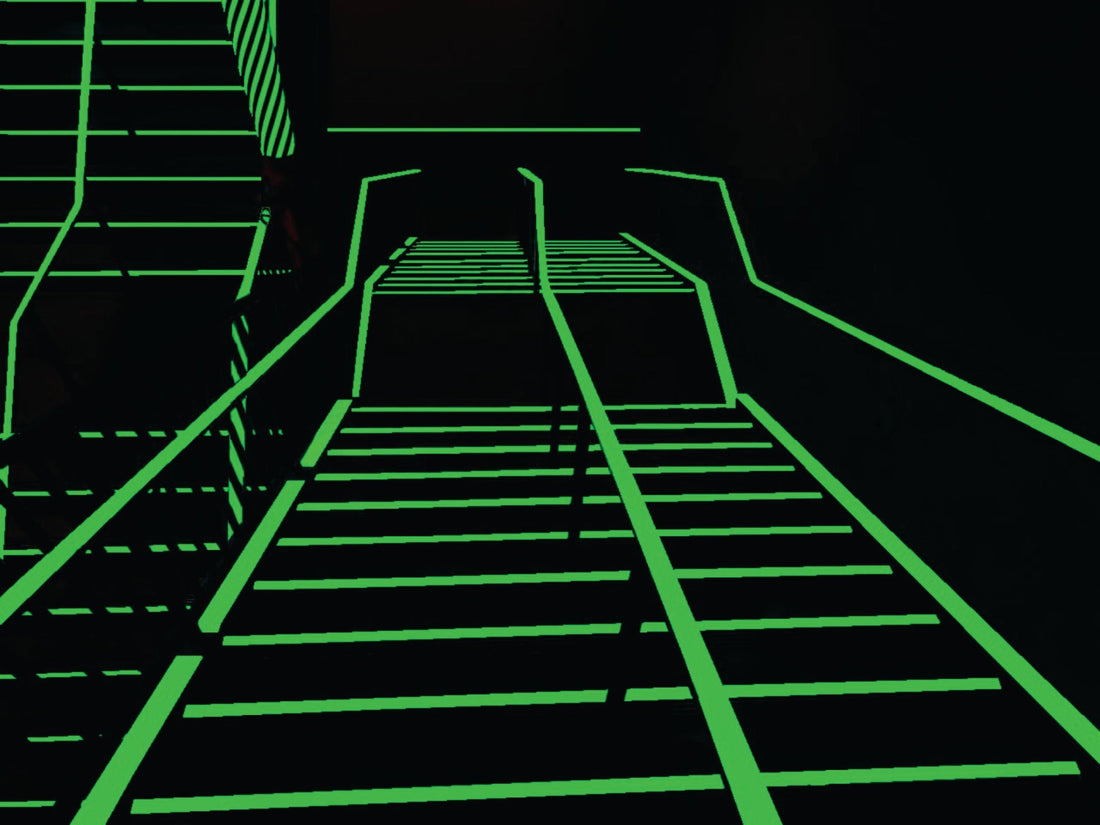
Luminous Egress Path Markings
Luminous Egress Path Marking: Enhancing Safety in Emergency Situations
Luminous egress path markings are a vital component of modern safety systems, designed to guide occupants to safety during emergencies such as fires, power outages, or natural disasters. These markings provide clear, visible guidance even in the absence of electrical lighting, ensuring that individuals can locate exits and navigate escape routes effectively.
What Are Luminous Egress Path Markings?
Luminous egress path markings consist of photoluminescent materials that absorb ambient light and emit a glow in low-light or no-light conditions. These materials can be incorporated into various components, including:
- Stair treads and nosings
- Handrails
- Door frames and door hardware
- Exit signs
- Floor perimeter demarcations
The markings are designed to remain visible for extended periods, making them especially useful in prolonged emergencies.
The Importance of Luminous Egress Path Markings
- Improved Visibility in Emergencies In situations where power systems fail, such as during a blackout or fire, luminous egress path markings provide a reliable source of visibility. They ensure that escape routes remain identifiable, reducing panic and confusion.
- Compliance with Safety Regulations Many building codes and safety standards, including those from the International Building Code (IBC) and the National Fire Protection Association (NFPA), mandate the installation of luminous egress path markings in certain types of buildings. Compliance ensures legal adherence and demonstrates a commitment to occupant safety.
- Enhanced Evacuation Efficiency Clearly marked egress paths facilitate faster and more orderly evacuations, reducing the risk of injuries and fatalities. This is particularly critical in high-occupancy buildings such as offices, schools, hospitals, and stadiums.
- Durability and Reliability Photoluminescent materials do not rely on electrical power, batteries, or bulbs, making them a cost-effective and low-maintenance solution. Their reliability under challenging conditions, such as smoke-filled environments, adds an extra layer of safety.
Applications of Luminous Egress Path Markings
Luminous egress path markings are used in a variety of settings, including:
- High-rise buildings: Ensuring visibility in stairwells and corridors.
- Transportation hubs: Guiding passengers in airports, train stations, and subway systems.
- Marine vessels: Enhancing safety on ships and offshore platforms.
- Public facilities: Providing clear egress routes in theaters, auditoriums, and shopping malls.
Key Considerations for Implementation
When installing luminous egress path markings, consider the following:
- Compliance with Standards: Ensure the materials meet local and international safety regulations.
- Proper Placement: Markings should be strategically placed on stairs, handrails, door frames, and other critical points along evacuation routes.
- Regular Maintenance: While photoluminescent materials require minimal upkeep, periodic inspections are necessary to confirm they remain visible and effective.
Luminous egress path markings are an essential element of any comprehensive safety strategy. Their ability to provide reliable, non-electric illumination during emergencies can save lives by guiding occupants to safety. Investing in these markings not only ensures compliance with safety standards but also underscores a commitment to the well-being of building occupants. By incorporating luminous egress path markings into your safety plan, you contribute to creating safer environments for everyone.
